“War Stories”
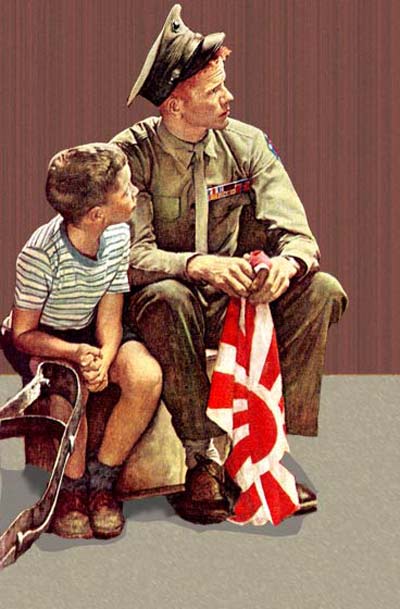
“War Stories”
from October 13, 1945
A number of Rockwell Post covers have become iconic — classics we all recognize right away. Some of the wartime covers we show you here may be some of the illustrator’s finest work, yet they are seldom seen. We view them this Memorial Day weekend to honor those who have served and those who serve today.
“War Stories”
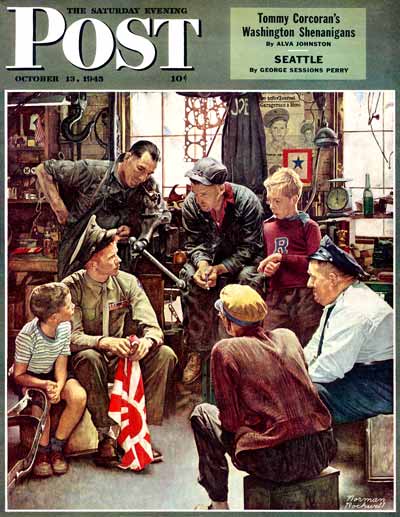
“War Stories”
from October 13, 1945
A war hero, holding a Japanese flag, has tales of war to tell, and clearly the memories are not light, the retelling not boastful, and the life-altering experiences he relates are riveting. The news article on the wall shows that the soldier is a local hero. The model was not a former garage employee, but was indeed a decorated Marine named Duane Parks. Rockwell found him in Dorset, Vermont. The other models were, as usual, Arlington, Vermont neighbors of the artist. The man with the pipe leaning in to listen was the owner of the garage, Bob Benedict. The man posing as the policeman was Arlington town clerk and newspaper editor. The young boys Rockwell found even closer to home: the boy sitting next to the Marine was his youngest son, Peter, and the blond boy to the right was his oldest son, Jerry. They, along with brother Tommy, appeared on many a Rockwell canvas.
“The Armchair General”
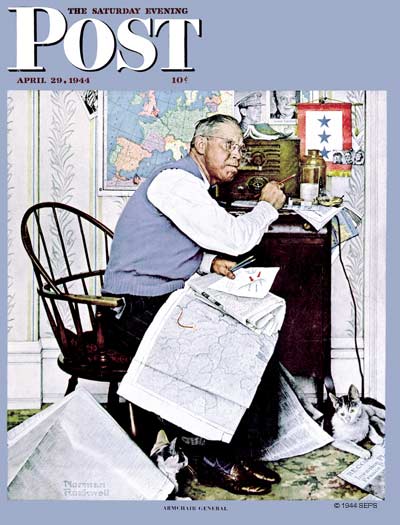
“The Armchair General”
from April 29, 1944
Tracing each advance and retreat is more than an interesting pastime with this gentleman. The service flag with three stars indicates he has that number of sons serving. May the stars remain forever blue, for a gold star represents a serviceman who will not return home. With his customarily remarkable eye for detail, Rockwell shows a tiny photo of each boy by the flag, photos of generals MacArthur and Eisenhower, a wall map, and an old-fashioned radio.
“The Clubhouse Examination”

“The Clubhouse Examination”
from June 16, 1917
Going back to 1917, Rockwell shows us a different kind of “recruitment center.” Even on tiptoe, our would-be soldier doesn’t measure up to the “nesissary hite.” The “recrooter,” decked out in a combination scout/soldier attire, was one of Rockwell’s favorite early models, Billy Paine. Alas, boys sometimes do foolish things in real life and Paine died at age thirteen doing a stunt from a second-story window. He was in fifteen Rockwell Post covers.
“Fisk WWI Soldier – Youth’s Companion” by creator
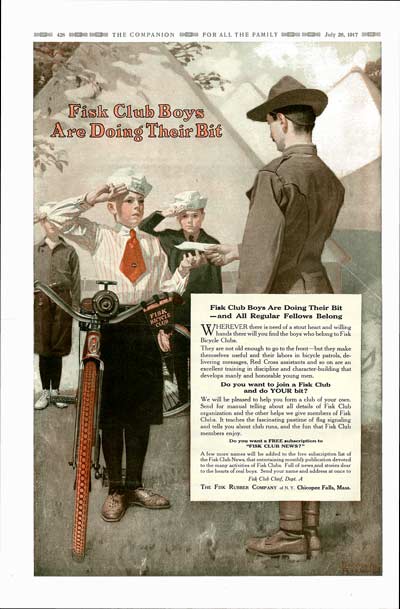
“Fisk WWI Soldier – Youth’s Companion”
from July 26, 1917
We found a couple of boxes of a publication called The Youth’s Companion in the archives recently. This was a children’s magazine published in Boston from 1827-1929. By happy accident, we noticed this Rockwell ad for something called “Fisk Boys Club” from a 1917 issue. Rockwell numbered Fisk Tires among his many advertising clients. What was the Fisk Boy’s Club? It was a way for youngsters to participate in the war effort:
They are not old enough to go to the front–but they make themselves useful and their labors in bicycle patrols, delivering messages, Red Cross assistants and so on are excellent training in discipline and character building that develops manly and honorable young men.
“Home at Last”
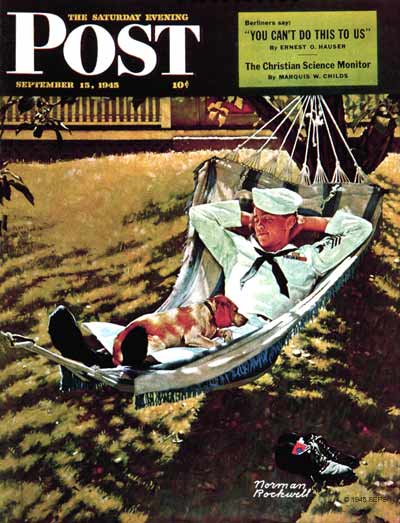
“Home at Last”
from September 15, 1945
Back to post-WWII for a restful snooze in a hammock on a quiet, sun-dappled afternoon — who could wish for more for our loved ones returning home?
Rockwell was a borrower for this painting. He borrowed the sailor, soon to return to the Navy, from Williams College. The sailor’s uniform was borrowed from a shipmate, as he didn’t have the decorations on his own. The house was borrowed from a neighbor; the hammock from another neighbor. Rockwell borrowed the pooch from his son, Tommy. The shoes were not borrowed however — they belonged to the artist.
Become a Saturday Evening Post member and enjoy unlimited access. Subscribe now
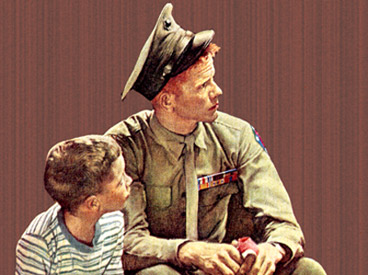

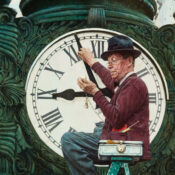
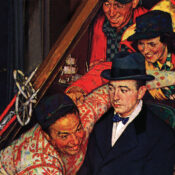
Comments
Excellent. I really enjoyed seeing the pictures and going down memory lane. well put together.
“Bringing back” the Post is one of the best things to happen. It’s like a bit of the past lighting up my life again. Norman Rockwell especially continues to bring back fond memories. I remember the sad day I tried to understand, when my mother wept and my father wasn’t his jolly self. At six years old I’d never heard of a place called Pearl Harbor, and I couldn’t comprehend the black importance of this dreary Sunday. Four years later after seeing innumerable soldiers, sailors and marines in the streets of my home town; after seeing countless news reels, and seeing newspapers pictures, I had a better grasp. I was proud of our military personnel even after the war ended. I was later proud to serve my country in the Navy.
these are great Rockwell art i grew up in his hay days
DEAR MS. DENNY,
AS USUAL, YOUR ARTICLE ABOUT NORMAN ROCKWELL’S ART WAS BOTH INTERESTING AND EDUCATIONAL.
WARM REGARDS,
ARNOLD KUNERT